Dali, Taichung
International Bodhisattva Sangha
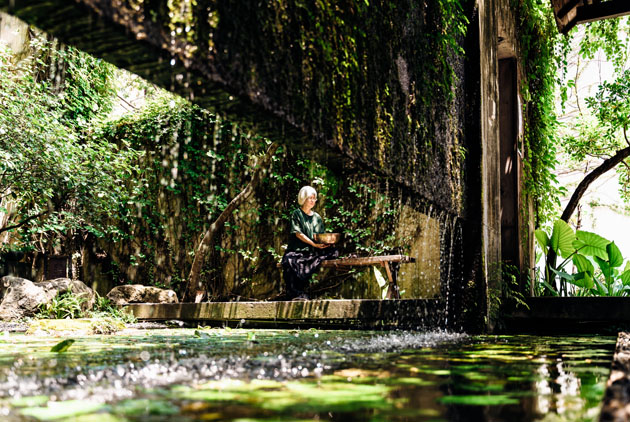
Source:Chen Chien-hao
How does the grape ivy on the wall grow so exuberantly? And why is the temple’s main entrance so small? Located in Dali, Taichung, the International Bodhisattva Sangha is an imperfect, flawed building. However, it is through its simplicity that one is able to experience the very essence of life. If life were a mountain, then the International Bodhisattva Sangha would be the awakening power that accompanies people to the mountain.
Views
International Bodhisattva Sangha
By Kao Chia-lingSponsored Content
A Small Door that Leads to a Big World: Offering Cool, Quiet Blessings in Life
Unlike normal Buddhist temples with a big, open door, the door here has been left ajar. It is retracted a few meters inward in comparison to the surrounding buildings, leaving an arcade space for the old plum tree out front. The tree is lush and tall, with the three low-key words "International Bodhisattva Sangha" hidden amongst the tree’s shadows.
International Bodhisattva Sangha Executive Director Yeh Pen-shu sits comfortably on a big rock under the tree and explains with a smile, “The appearance of the temple is not conspicuous, and the door was designed to be very small. The reason for this is to allow people to choose for themselves whether they are willing to courageously open this door to explore the deeper parts of life."
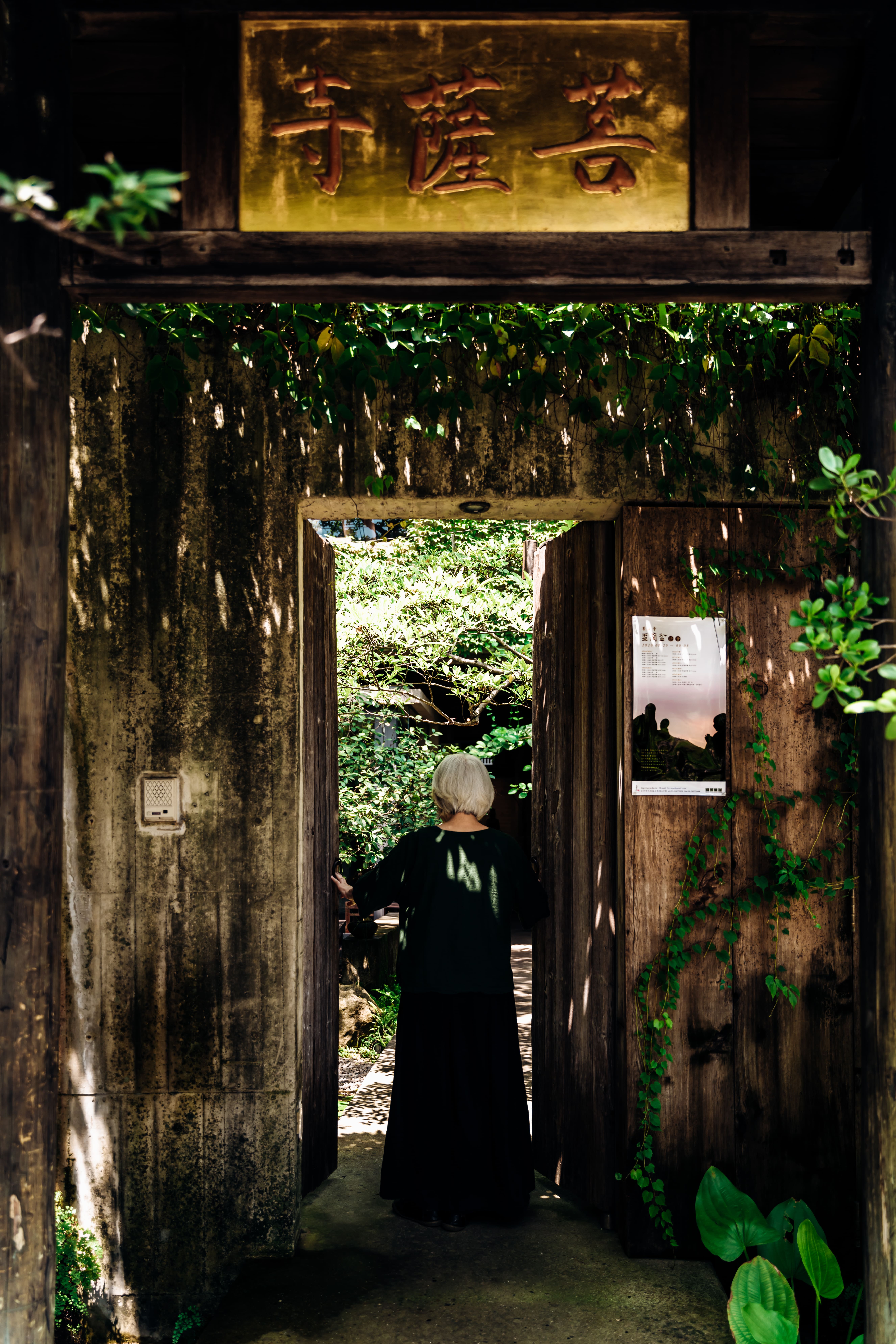
Natural Architecture: To Be Continued
In order to further understand Venerable Master Hueiguang’s interpretation of Buddhism, Banmu Tang architect Chiang Wen-yuan studied Buddhism with him while contemplating how to translate intangible concepts into real architectural terms. It wasn’t until 2005 that this minimalist yet not too simple concrete building was finally born.
However, Yeh Pen-shu still laughs and claims that, even until now, the building still remains unfinished. "The International Bodhisattva Sangha was designed with 500 years of thinking. Many details are impossible to complete at the moment, but they are still beautiful. Waiting for the time to come is also a kind of learning."
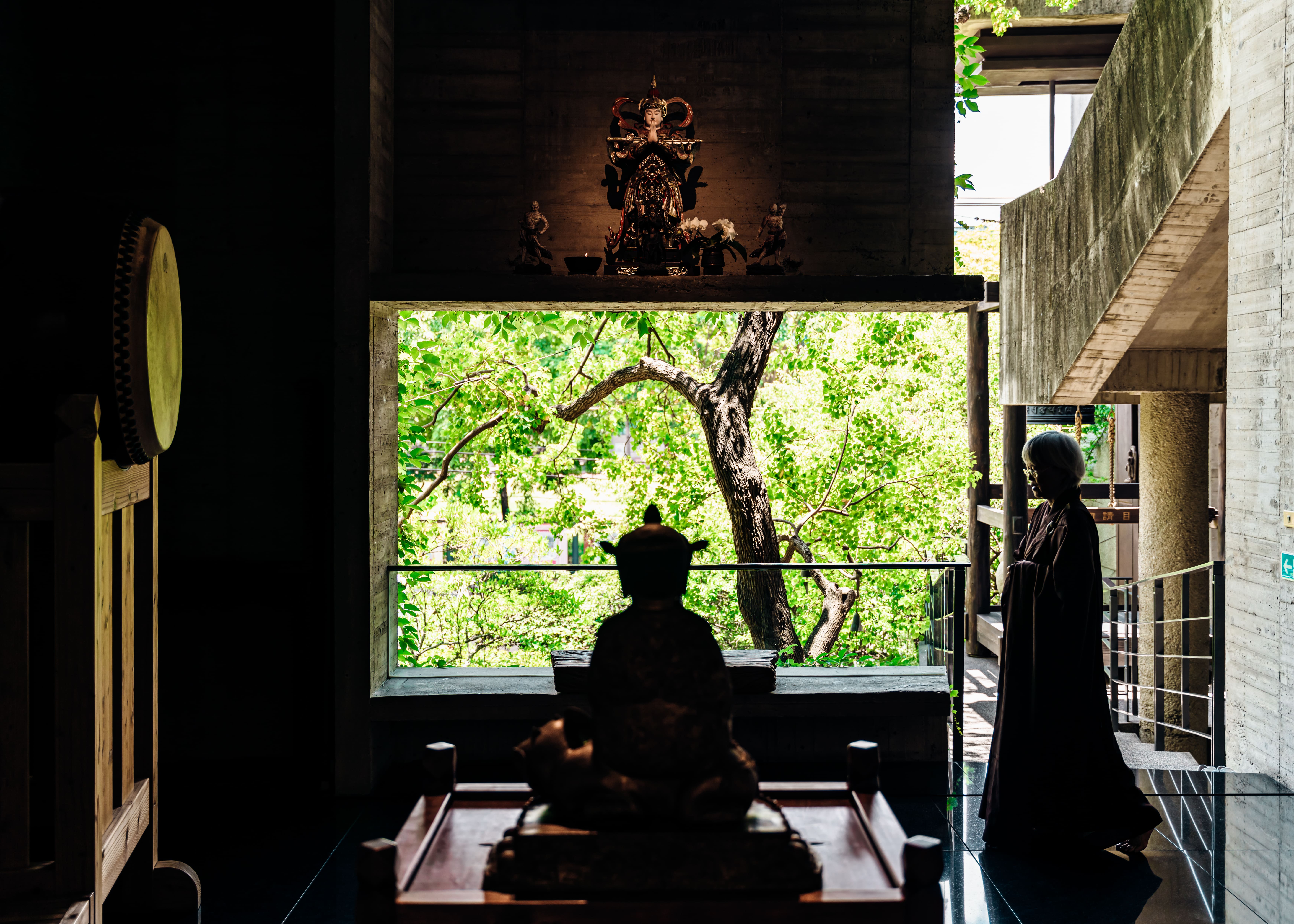
Embracing the Imperfections in Life
“Many people are curious, How are the grape ivy in the International Bodhisattva Sangha so beautiful? Actually, what they don’t know is that it is because of these potholes that the plants have a foundation for growing. As long as one is accepting, what one believes is a flaw can actually grow into a strength. In the same way, one will inevitably encounter failure in life. Do not try to overlook it. Over time, a part of the sky will open up and be uncovered."
Scripture Writing, Rice Bowls, Tibetan Incense: Repairing Oneself from the Hand to the Heart
Upon climbing the stairs and opening the door to the scripture copying room, the smell of wood drifts out. Although there is no air conditioning inside, it feels very cool. As the summer heat sifts out, the frivolous heart seems to settle down. It is a nice place for people to find peace and calmness.
A pen and copy of the "Prajna Paramita Heart Sutra" inscribed by Venerable Master Hueiguang is neatly placed on each table. One can take a piece of paper, sit quietly, and slow down their breathing to begin inscribing. There are not many scriptures – only 260 words. In the process, hands that are so often used to typing quickly on the keyboard slow down with each brushstroke, and the heart finds a settling power. Just by inscribing, one can find healing.
Step out of the temple, and the Vima House next door has more opportunities to experience living art. Coffee, tea, clothing, and art products are all placed on the first floor. Among them are handmade Tibetan incense from the Himalayas. Each column is from the work of Tibetan incense master Ren Ching Te-che, containing 20 to 30 medicinal materials. Some are even added with more than ten kinds of minerals to make the fragrance complete.

From collecting medicinal materials to making incense sticks, the entire process must be done by oneself. For example, the “Chenhui” incense is used to help soothe the nerves; therefore, west-facing plants must be collected. The function of "Hsingyen" is used to refresh the mind, so east-facing plants must be used. Aside from all this, the annual rainfall and temperature can also affect the time and schedule of incense-making; therefore, each stick of incense is rather precious.

On the second floor, there is a space for drinking Nepalese coffee. The bookshelves are filled with books on various themes, divided into interesting topics such as food "Everyone Needs a Kitchen" or the history of mankind and origins of the universe "Where Will We Be?" In addition to coffee and drinks, a rice bowl has recently been added and is available by appointment only. Containing the heart of the Buddhist temple, it is a bowl of richness filled with nourishing vegetables and rice.

While Visiting Taichung: Visit the Gathering Place of the First Generation of Culture and Youth
Reading on the International Bodhisattva Sangha must be experienced and done with the heart. On the other hand, reading on the Central Bookstore is like going back in time to look at the history of thought and culture in central Taiwan and can be equally satisfying.
The 1920s was an era of Taiwan’s enlightenment in the establishment of local culture, especially for overseas students studying in Japan. After being exposed to new trends of thought, they returned to Taiwan upon graduation, and opened the prelude to Taiwan’s new cultural movement. The Taiwanese Cultural Association was thus born and held various cultural enlightenment movements throughout the country. The Central Bookstore in Taichung City at that time was a part of this context. It was established in 1927 by Chuang Chui-sheng, a member of the Taiwanese Cultural Association, which included Lin Hsien-tang, Lai He, and others as shareholders.
The Central Bookstore gathered many literary energies in central Taiwan at the time. The Chinese and Japanese books introduced by Chuang Chui-sheng can be regarded as a window of knowledge at the time. Later, famous painters Kuo Hsueh-hu and Lee Shih-chiao’s painting exhibitions were held, which depicted scenes of old art and literature.
However, with the closure of business in 1998, it was once turned into a convenience store, a nougat store, and a helmet store. It was even rumored to be demolished at one point.
However, thanks to the success of Hsin-Yi Foundation Chairman Chang Hsing-ru , the future of the bookstore is now protected. In fact, Chang Hsing-ru has a deep relationship with the Central Bookstore. Her father and uncle were both shareholders of the company. "Chuang Chui-sheng and Yeh Rong-chung, who had close contacts with the bookstore, were all uncles of mine who came and went in my house growing up!”
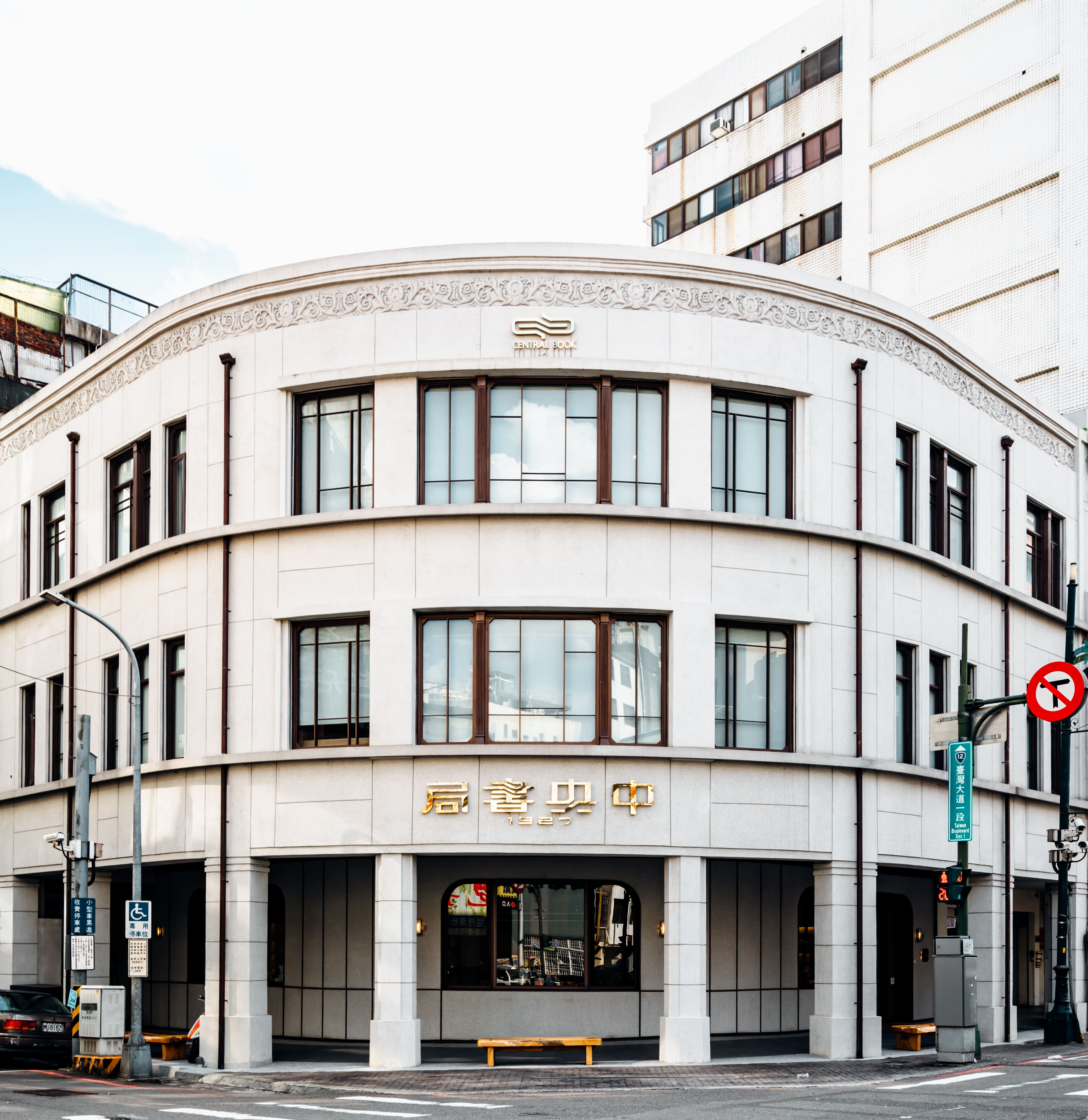
The Central Bookstore, which has rebranded its signs, is looking forward to becoming a place to "discover culture through living." Their book selection and exhibitions focus mostly on the connection between the Taiwanese and the land, even including their catering. "A lot of tea in Taiwan is produced in central Taiwan. Therefore, their main course is based on tea and rice, using Dong Ding tea, Sun Moon Lake black tea, Four Seasons Tea, etc. to bring out the flavor of central Taiwan. Even more special is the use of Taiwan’s native cinnamon to make tea, which contains no sugar but is full of sweetness regardless. On the weekend mornings, there is also a three-by-three grid breakfast consisting of local dishes and fresh bamboo shoots porridge in Dakeng, which is very popular."
The light in the old bookstore remains on, as if it continues to recall all the memories and time spent with people, books, and space.
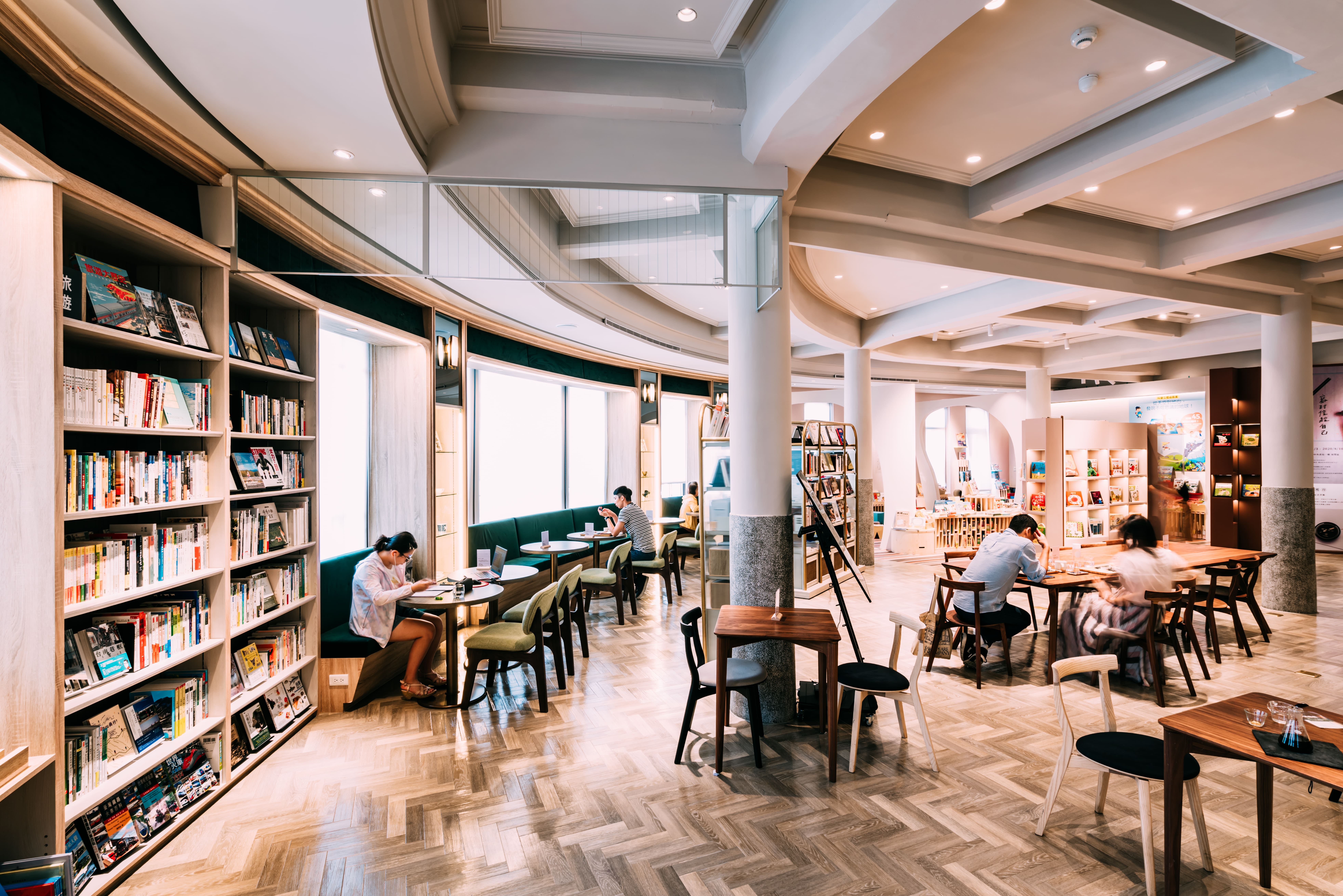
Getting There・the International Bodhisattva Sangha
Public transportation: From the HSR Taichung Station, transfer to United Bus No. 3, and get off at "Shuangwen Dongrong Rd. Intersection." From there, the temple is within walking distance.
Self-drive: Rent a car at the HSR Taichung Station and head to Jianguo North Road, Section 1. Connect to City No. 11 Township Road, and take Wenxin South Road to Yonglong Road. It is approximately a 20-minute drive.
International Bodhisattva Sangha
No. 147, Yonglong Rd., Dali Dist., Taichung City 412, Taiwan
04-24079920
Vima House
No. 153, Yonglong Rd., Dali Dist., Taichung City 412, Taiwan
04-24079960
Central Bookstore
No. 235, Sec. 1, Taiwan Blvd., Central Dist., Taichung City 400, Taiwan
04-22259024






